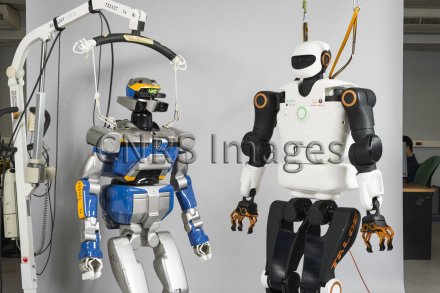Production year
2017

© Cyril FRESILLON / LAAS / CNRS Images
20170051_0033
HRP-2 and Pyrène, two generations of humanoid robot side by side. The specifications for both robots were drawn up by the robotics team at LAAS. Pyrène is the next step in evolution after HRP-2, which was developed in 2006 at the Joint Robotics Laboratory, a Franco-Japanese venture. Research scientists wanted to supplement its physical abilities with improved computing and reasoning capacities. Pyrène was the successful outcome of this challenge in 2017. It uses new lithium battery technology, making it more powerful, and has excellent environmental perception and computing capacities. It has been designed to carry heavy loads, go up and down stairs, adapt to unstable ground and use tools to perform complex actions. An inertial measurement unit helps it keep its balance, like the inner ear in humans, while its depth-perception camera lets it see objects so it can neatly step round them. Pyrène can also perform tasks that are dangerous or demanding for humans, for example in industrial settings.
The use of media visible on the CNRS Images Platform can be granted on request. Any reproduction or representation is forbidden without prior authorization from CNRS Images (except for resources under Creative Commons license).
No modification of an image may be made without the prior consent of CNRS Images.
No use of an image for advertising purposes or distribution to a third party may be made without the prior agreement of CNRS Images.
For more information, please consult our general conditions
2017
Our work is guided by the way scientists question the world around them and we translate their research into images to help people to understand the world better and to awaken their curiosity and wonderment.